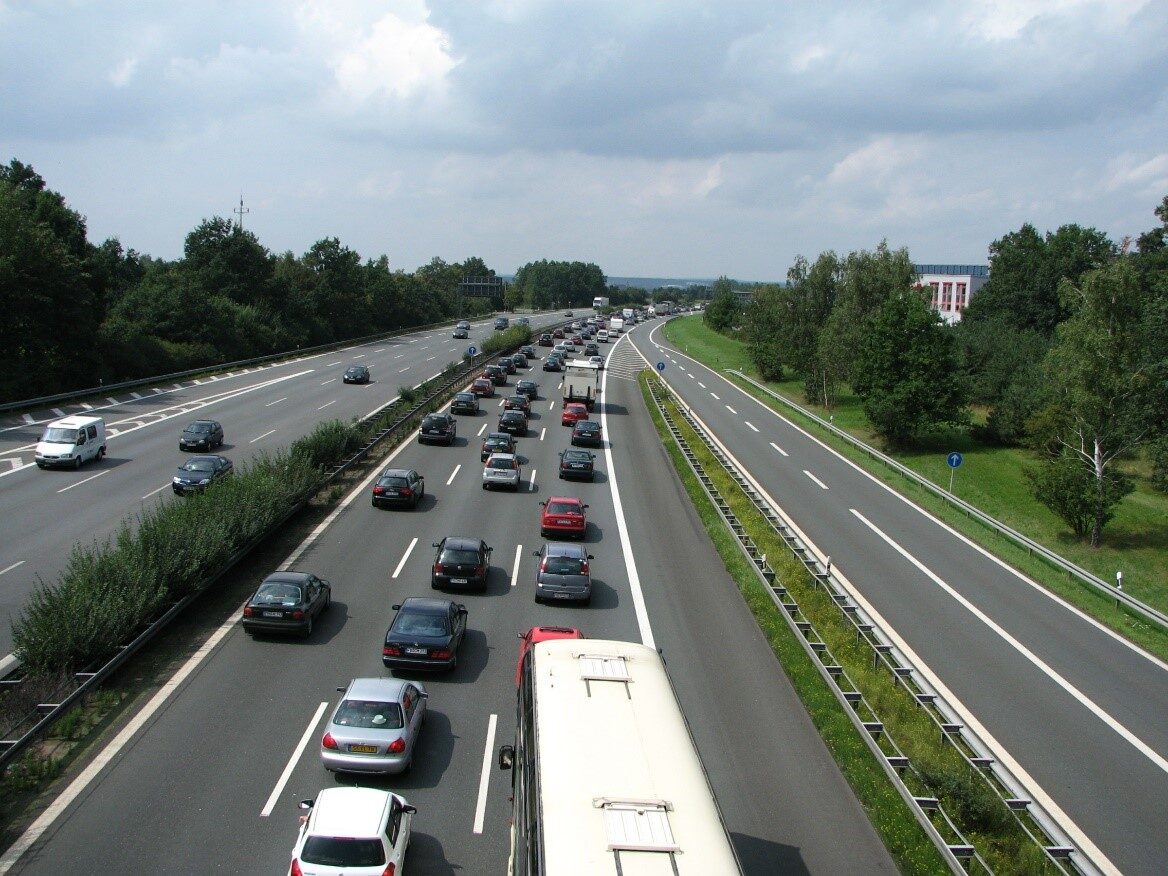How do you reduce congestion without expanding the national road network?

Multi-part blog series on more road safety and traffic quality (part 4/7).
In our multi-part blog series, we examine the development of Swiss national roads in relation to the system architecture Switzerland (SA-CH) and traffic management and show step by step the experience of the Eraneos Group in these topics. In this fourth part, we show how traffic jams can be reduced with the smart use of traffic management systems without expanding the national road network.
Anyone who drives a car has experienced it: the unpleasant traffic jam on the way home after work or on a trip on a not-quite-relaxed weekend. On the Swiss national roads, there are daily traffic jams on many routes. The Federal Roads Office (FEDRO) aims to continuously reduce traffic jams. Strictly speaking, the annual traffic jam hours on national roads are to be reduced by 25% by 2030 compared to 2015.
In order to eliminate the traffic congestion, the national roads are selectively and specifically expanded - such projects are expensive, require a lot of resources, take a long time and are not the preferred measure from an ecological point of view. Traffic management measures can also counteract the congestion and can be implemented more quickly. FEDRO is therefore currently implementing such measures on heavily loaded sections of the Swiss road infrastructure and will be expanding them to other sections in the coming years.
In this blog article, we go into more detail on three measures that are being implemented throughout Switzerland and are intended to lead to a noticeable improvement in the traffic situation for drivers. This is the so-called
- Speed harmonization and hazard warning (GHGW),
- ramp dosing (RaDo) and
- Emergency lane conversion (PUN).

Speed harmonization (GH) uses dynamic signals (e.g. by changing the maximum speed from 100 km/h to 80 km/h) to reduce the speed differences between vehicles. These differences (between a car and a truck, for example) can lead to hand organ effects in heavy traffic. If all vehicles drive at the same speed, traffic flow improves. It has also been found that a national road with a traffic speed of 80 km/h can accommodate the most vehicles per minute.
The danger warning (GW) informs the driver in good time about upcoming dangers on the road, such as a traffic jam, an accident, a construction site or the risk of skidding in the wet or on icy roads.
As soon as the traffic is very heavy on a section of the route and there is a risk of a traffic jam, this is detected by sensors using traffic data acquisition (VD) on the route. Without changing and thus directing the traffic, it would lead to traffic jams. Therefore, the speed is gradually reduced and at the same time a traffic jam warning is signaled, which improves acceptance of the speed reduction among road users.
PUN is another traffic management measure to improve traffic flow and safety when traffic is heavy. For this purpose, (overhead) signals are activated on the national roads, which indicate to drivers whether they are allowed to use the hard shoulder. The traffic is thus distributed, for example, from two to three lanes, and the risk of congestion and thus the risk of an accident is reduced.
There are permanent PUNs on the Swiss national roads, where driving on the emergency lane is permitted at all times, as well as temporary PUNs, where the release is controlled depending on the traffic.

GHGW are already in use on more than 300 km of the national road network. For example on the section between Muri and Thun-Nord.
In western Switzerland, PUN was piloted between Morges-Est and Ecublens from 2010. Today you can experience driving on an approved breakdown lane there.
Conclusion
In the next few years, as drivers or passengers, we will increasingly encounter new facilities on the Swiss national roads, which will affect not only the general flow of traffic but also our driving style.
For some people, these have been part of everyday life for a long time - others will still have to get used to driving on the emergency lane, stopping at a traffic light at the entrance to a national road or temporarily driving at 80 km/h on the national road. However, it is fair to say that it is better to drive at 80 km/h than to be stuck in a traffic jam.
Ultimately, these measures are about making better use of the existing national road surface. Even if the measures on heavily traveled sections do not replace the expansion of the national roads to include more lanes, these expensive and long-term projects can be delayed in a targeted manner. One also speaks here of the intelligence of the national road - instead of concrete.
How to minimize the risks of a new system architecture
Towards standardization of operational and safety equipment (OSE) on the national road network
Smart Mobility | Mobility in Transition
Continuously growing traffic volume on our roads and increasing passenger volume in public transport... What is required are new, intelligent mobility services that take into account the zeitgeist of digitalization.
We have compiled reports on our projects, interesting facts from the various competence and customer areas as well as information about our company for you here.
